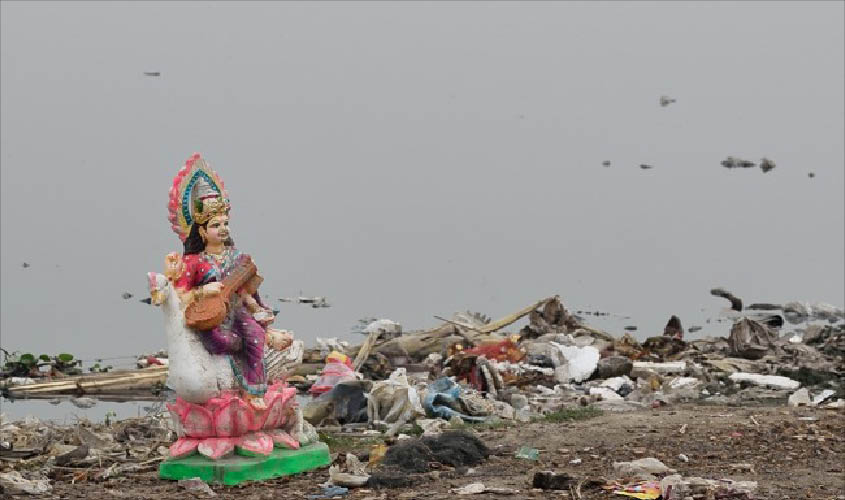Tonnes of sewage and industrial effluents flowing into the river every day.
Gallons of sewage emanating from Delhi’s industries and human habitats are rapidly turning the Yamuna into a drain, say environmentalists and conservationists.
Selvarajan, a noted environmentalist and promoter of Green Circle, a Delhi-based NGO, told The Sunday Guardian. “Every day, Delhi’s industries and human habitats add up to 850 million gallons of sewage into Yamuna though its 22 big drainage outlets spread across the capital.”
According to the findings of a research conducted by Selvarajan and his organisation Green Circle, almost 80% of the entire Yamuna’s pollution is happening within the 22 km stretch of the total length of the river which is shared by the capital.
Explaining the alarming situation of the Yamuna, Selvarajan said: “Most of the untreated or partially treated waste water is entering into Yamuna through the Najafgarh drainage only. The untreated water entering into Yamuna through this drain constitutes around 60% of the total pollutants coming in the river from Delhi.”
“The Delhi government’s plan of installing interceptor in the drainage is yet to become fully operational. However, the interceptor is a good step, but these interceptors would only prevent the additional waste water coming from the new drains and it will not reduce the existing waste water in the river,” he added.
Even a committee appointed by the NGT, hadrecently come up with its report which said that there has hardly been any improvement in the situation so far, as most of the installed infrastructure to prevent pollutants from entering the river, is not working properly.
“The city generates almost 900 million gallons (of sewage) per day, but the 36 treatment plants at 22 locations have a combined capacity of 700 MGD. Most of these sewage treatment plants are almost dysfunctional and, in realty, these plants are together treating only 400 MGD of sewage,” the NGT appointed committee’s report reads.
“Across the capital, only six-seven locations have monitoring laboratories with only 15 analysts at work. These laboratories – supposed to test samples before and after treatment—function only eight hours a day instead of working round-the-clock,” it reads.
A source close to the agencies involved in the operation of a sewage treatment plant said: “More than half of the total sewage plant operators are hired on a contract basis and are being fully paid, but not working as per the hours prescribed.A plant in northwest Delhi is treating only 1 MGD of sewage against its installed capacity of 10 MGD, but is paid full payment.”

